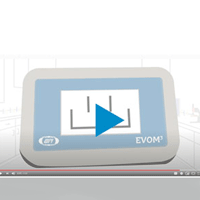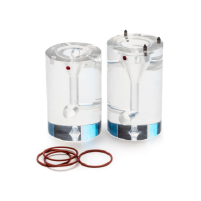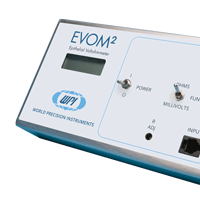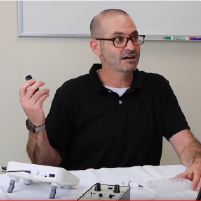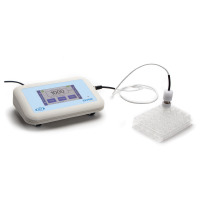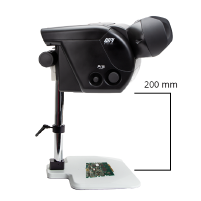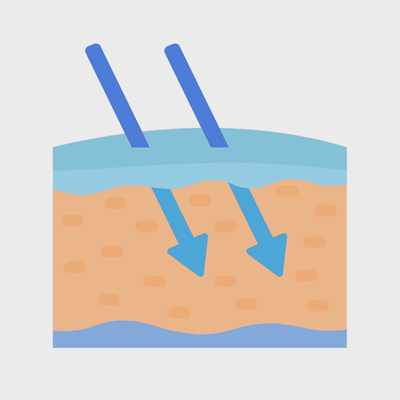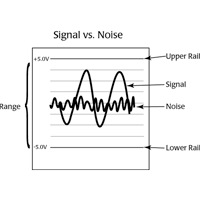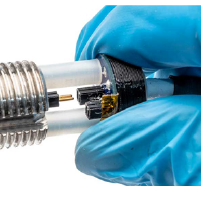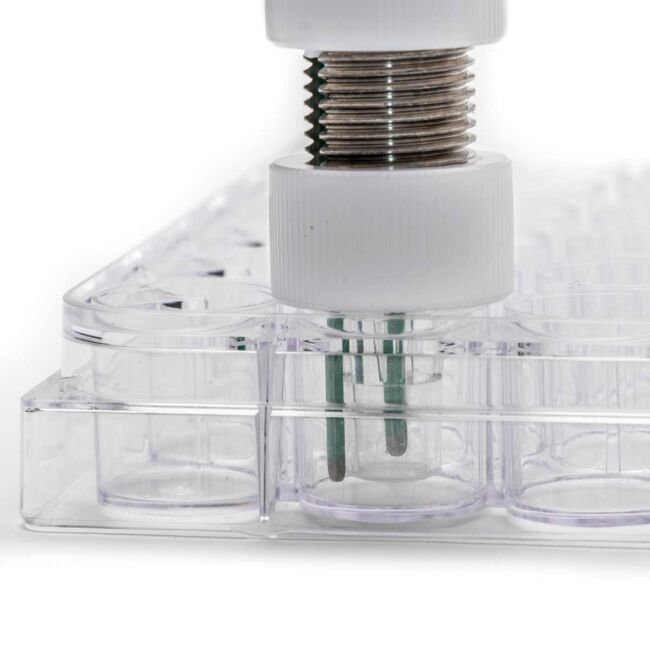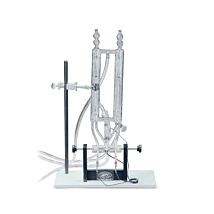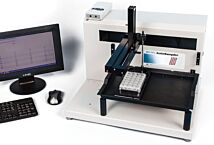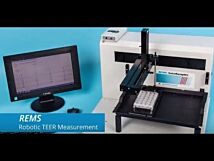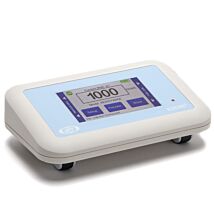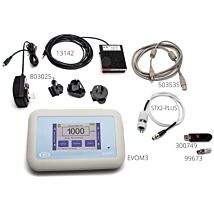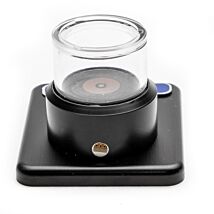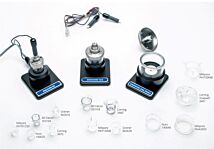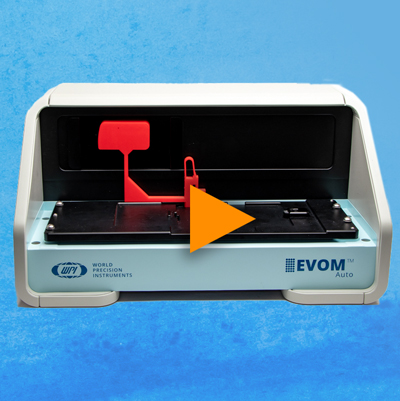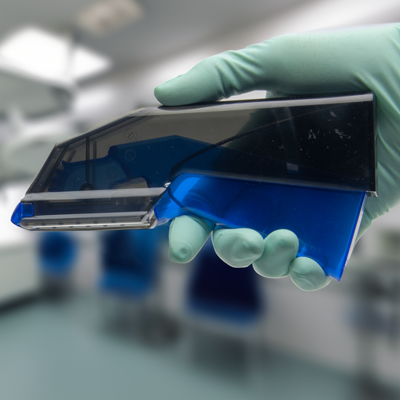This website uses cookies to ensure you get the best experience on our website.
Read more
Researcher's Review of the EVOM3
April 19, 2021
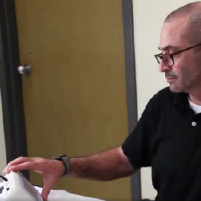
by Benjamin Dubansky, PhD, Animal Physiologist/Researcher
The EVOM is a special kind of voltmeter for measuring electrical properties across a layer of cells in culture or a biological membrane. It is the most commonly used commercial system for measuring across a layer of cultured cells. We are measuring TEER (TER) - Transepithelial Electrical Resistance. The EVOM3 allows us to zoom in and measure either resistance or voltage across these membranes or cells in culture.
Why was it invented?
The EVOM (Epithelial Volt Ohm Meter) was designed in the 80’s. It was invented back when multiwell culture plates were first introduced. Soon after there were permeable inserts, which allowed us to suspend a layer of cell in media.
When you put your cells down in these permeable inserts, they divide and form a confluent layer across the otherwise permeable insert. As the cells grow to confluence, you can use the EVOM to watch the resistance go up until it plateaus. Once you get a tight, confluent layer with intracellular junctions, you can start your experiments.
What kind of experiments can you do with an EVOM3?
Everything! Once you have a confluent layer with intercellular junctions on a permeable substrate, you essentially have a layer of epithelia with barrier and transport properties of a biological membrane, but in culture. You could add a substance on one side and monitor the transport or cell response.
That means you can work with the barrier properties of endothelia, like the blood brain barrier, where you can track the potential for permeability to drugs, or the effects of xenobiotics in toxicity studies across epithelial cell layers. EVOM3 is cabable of handling thousands of basic science applications including mechanistic studies to discover transport mechanisms from ion channels, receptor mediated transport, paracellular transport, intercellular junctions, wound healing, remodeling, and more. Once the cells are on the inserts, they can be imaged, too.
How is the EVOM3 like an Ussing Chamber?
This sounds like the Ussing chamber, but not quite. The Ussing chamber produces a uniform field across the membrane which allows you to apply a consistent voltage across the epithelia and more uniform monitoring of the whole sheet of epithelia at the same time. The Ussing chamber is really for explanted tissue. For example, you can cut a piece of intestine and culture that in an Ussing chamber to study transport or barrier properties similar to what I just described. The drawback of an Ussing chamber is that you can only do a couple samples at once. An Ussing chambers is definitely not a 24-well plate. There are ways to adapt the EVOM3 to get Ussing chamber-like data at higher throughput. While the EVOM3 is not as exact as an Ussing chamber, it is still a solid platform with a much higher throughput than an Ussing chamber.
The easiest way to use the EVOM3 is to just take your measurements during an experiment to monitor changes that might occur over the course of a treatment. Or you can use the EndOhm electrode configuration. While the EVOM3 is not as exact as the Ussing chamber, you can still get Ussing chamber-like data from the EVOM series, especially the new ones (EVOM3).
Why is the EVOM3 so much better than the older models?
EVOM3 is Faster
The new version, as you might imagine, is much faster. It reports values faster, because there is less waiting for the values to stablilize. This makes it much easier to get through a plate. The increased speed lets you measure the same plate multiple times to track changes during an experiment much more effectively than before.
Tune the Resistance
You can also tune the target resistance. Doesn’t sound like a big deal, but it is. Airway epithelia or microvasculature have a very low resistance (100 Ω/cm2) versus blood brain barrier which would be several thousands of ohms (5,000 Ω/cm2). Different systems are different, too.
- Temperature (37°C vs Room Temp)
- Cell passage number
- Media (huge)
- How long you wait after confluence
- Eelectrode configuration
With the new EVOM3, there is an auto function for finding target ranges, since this may change as the cells are growing to confluence. If you are trying to culture a new cell line, you probably will not know the ranges of resistance you will encounter, and your values may be different than those reported due to factors mentioned above. I mention this because of my own cell culture trauma. In our case during grad school, we were doing primary cultures of fish gill cells. Not an easy target. The older EVOM we had required customization at the manufacturer to get the target resistance for fish gills.
Nowadays, the new EVOM3 can toggle between several measurement currents depending on your target resistance ranges, but it also has an auto setting for range finding resistances. It is much more versatile for primary cultures or if you think you might use more than one cell type.
Practical Design
Lots of gadgets have foot switches, because it frees up the hands. In this case, it means you don’t have to touch anything, minimizing the contamination potential. The foot switch also records the measurement. Every time you are ready to record a measurement, you press the foot pedal, and a reading gets entered.
The cool part is that it gets recorded into a spreadsheet format as you move from well to well. You don’t need to write anything down, which further frees your hands and eliminates the need to move in and out of the hood. This really improves the efficiency of workflow. You should see my lab books! Normally you have to enter it into a spreadsheet anyway. Now, it is automatically saved on a flash drive in CSV formt.
New Electrode Design
Many factors that can introduce inconsistencies in readings (temperature, media, consumables, time, plates, and electrodes). The old STX2 electrodes used in most cases require a steady hand, and it used to be an issue where, if you are not consistent in how you hold the electrodes (depth, angle, etc.), you risk getting inconsistent data. Now, the electrodes are fixed with a guide that fits the well insert. When you put the electrodes into each well, they are in the same place, at the same depth and the same distance between each other, in every single case. You can set the alignment once and roll through a plate knowing that you will be consistent. This is also a huge time saver. It is just so much easier to use.
Better Resolution, Touch Screen, Blanking
Here's some other great benefits of the EVOM3.
- The resolution is better, as you would imagine.
- The modern display and touch screen interface simplifies usage.
- You can subtract control values. That’s nice.
- Since it is much faster, and you get more consistent values with the electrodes, the stable readings and data handling, you can roll through timed experiments.
- TEER calculations are easy. Just multiply the resistance times the surface area of the insert/cell layer. You could do this over time and see changes in the intercellular junctions, like tight junctions, but it will be semiquantitative, but still relevant.
NOTE: If you require more accuracy, you can use the EndOhm electrode configuration, which plugs into the EVOM3. With that, you have to remove the insert and place it into a chamber that has perfectly aligned electrodes, kind of like an Ussing chamber. It is pretty nicely done to get quick and consistent measurements. You will have to move your inserts around. This is a slower process, but if you do a good job with cleaning and keeping your work sterile, the ENDOHM electrodes are amazing. They are a good bit slower, so the throughput is less, but miles faster than an Ussing chamber. And you are using cultured cells, so there’s that.

Close


